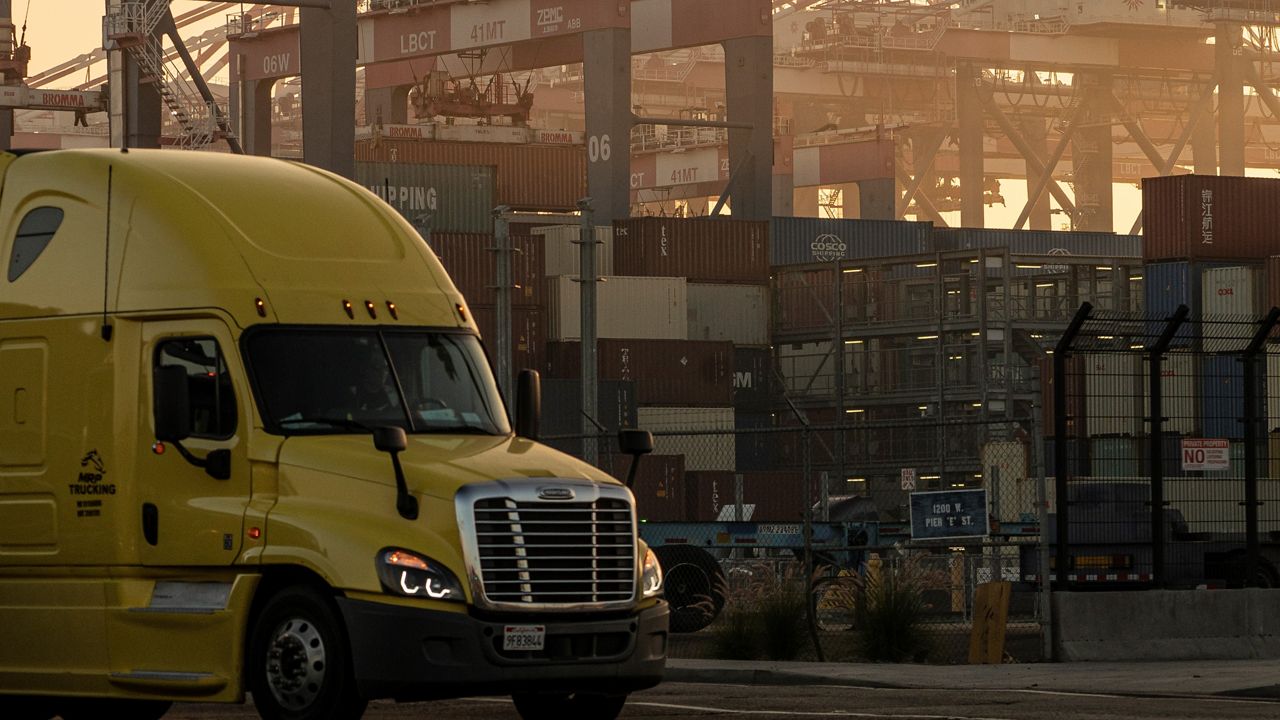SAN PEDRO, Calif. — The Port of Los Angeles continues to process record volumes of cargo. The San Pedro shipping complex had its third best month in its 115-year history in March, ending its best first quarter ever, the port reported Tuesday.
Executive Director Gene Seroka credits better fluidity on the docks for the increase. Fewer vessels are waiting on the water and cargo is moving more quickly at the terminals, he said. With the omicron variant in the rearview, more workers are on the docks and fewer shifts are being cut.
There are, however, some points of concern. The number of containers waiting to be loaded on rail is almost double what it was last fall. Seroka said the port is working with businesses and the Biden Administration to reposition train cars and keep the cargo moving, but if the time it sits at the port continues to increase, the $100-per-container-per-day dwell fee proposed last fall may have to be implemented “as a last-ditch effort,” he said.
Seroka expects a short-term lull in cargo flow because of COVID-induced closures in China, but he expects that will be “followed by a pretty quick bounce back” as manufacturers catch up on purchase orders.
“We won’t see an absolute stoppage of commerce,” Seroka said, adding that 43 ships have just departed Asia and are headed to the port’s docks.
The second quarter is typically the port’s slack season, but that isn’t likely this year.
“The second quarter will be another good one, with retailers bringing in more cargo to replenish inventories,” Seroka said.
With the U.S. Labor Department reporting an 8.5% increase in inflation in March, “that may have an impact on consumer buying, but we haven’t seen it just yet,” Seroka said. “We continue to maintain $2 trillion in savings accounts here in the U.S.,” which continues to fuel strong consumer demand and a brisk business at the port.
Earlier this month, the Port of LA began implementing a clean truck fee that charges truck operators $10 per container for using the facility and channels the proceeds toward zero-emissions trucks and equipment. Seroka estimates the program will generate $90 million annually to incentivize the development and deployment of zero-emissions vehicles and infrastructure.
As part of the Clean Air Action Plan, the port announced in 2017, 100% of the 12,000 trucks that operate there must be zero-emissions by 2035. The port is currently the site of 16 different pilot projects testing about 200 zero-emissions units, including ten hydrogen fuel cell tractor-trailers, hydrogen fueling stations and zero-emissions terminal yard tractors.
The Port of LA is expecting to receive a significant share of the $17 billion allocated for ports in the $1 trillion bipartisan Infrastructure Law President Biden signed last November. It will also benefit from the $2.3 billion California Gov. Gavin Newsom earmarked for ports and the supply chain system in the preliminary state budget released in January, $875 million of which will be spent on zero-emissions trucks, equipment and infrastructure.



